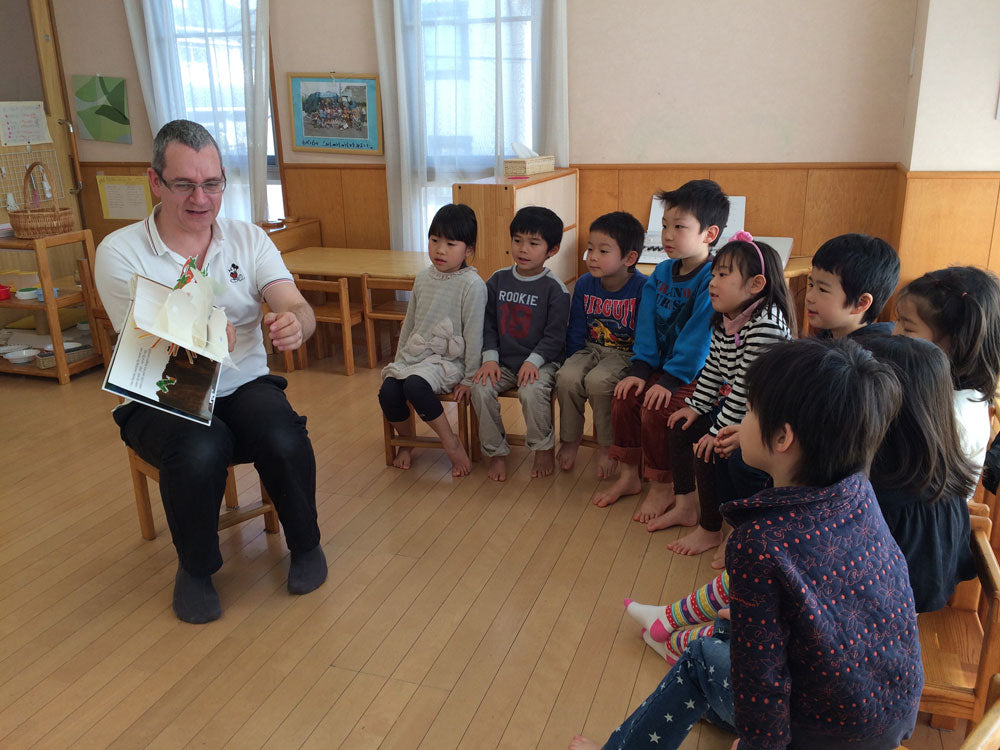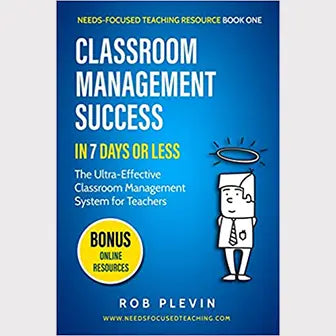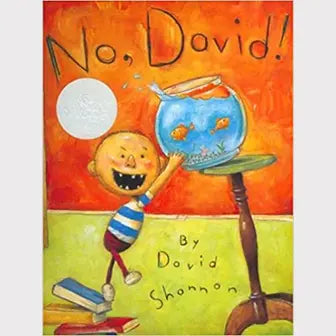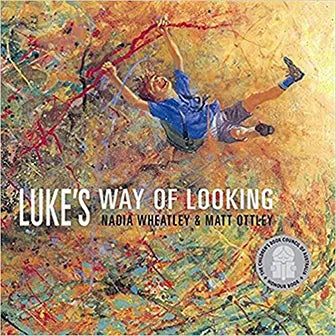
Over 100 Practical Tips and Strategies for Classroom Behavior Management
Compiled from interviews with 25 non-Japanese speaking English teachers working in 50 kindergartens, nurseries, schools, hoikuen, and yochiens across Japan.
© The Magic Crayons
-
This comprehensive guide offers over 100 practical tips and proven strategies to help English teachers manage classroom behavior effectively in Japanese early childhood and primary settings. Based on firsthand insights from 25 experienced non-Japanese speaking teachers working in kindergartens, nurseries, schools, hoikuen, and yochiens across Japan, this resource addresses the unique challenges faced in these environments. Whether you’re new to teaching or looking to refine your approach, you’ll find actionable advice to create a positive, engaging, and well-managed classroom.
-
Welcome
This document covers thoroughly, in detail, with specific examples and advice all areas of classroom management. It has helped a great number of teachers and hopefully will do the same for you. For those looking to teachh English in Japanese Kindergartens and Preschools without any prior teaching experience it is essential reading. Indeed, many dispatch companies do refer to their staff to this page.
©The Magic Crayons
No part of this document may be reproduced without permission. Thank you. -
Forward
As a Manager of a large teaching company supplying Teachers to over 50 Kindergartens in Japan the most common request from teachers was how to maintain discipline in the classroom. Many teachers had little or no Japanese language ability which when coupled with the unique experience of living and working in Japan resulted in many issues within the classroom.
We asked 25 non Japanese English teachers, with between one and 10 years teaching experience in Japan to supply us with their advice, their top tips, their tried and tested techniques to maintain discipline.We were amazed and truly grateful for the lengthy and informative responses we received. It seemed everyone remember clearly their first teaching experiences and were eager to pass on their thoughts.
Although written by those teaching in Japan this is an invaluable document to all those who teach English as a second language abroad.
Tim
Compiled by Shelby Webb at the Rocket School of English.
©The Magic Crayons
Introduction
-
Working with young children means having to deal with misbehaviour. Developing effective preventative measures and dealing effectively with behaviour problems when they arise are vital survival skills for a kindergarten teacher. Unfortunately there is no magic solution to the problems that arise in the classroom since there are as many possible behaviour problems as there are students. Successfully solving behaviour problems will require experimenting with different techniques, a positive attitude and determination.
This guide is a compilation of ideas that have worked for Teachers in the types of teaching settings that we work in. Foreign teachers in Japan work in a unique setting and face challenges not common in other teaching environments, therefore most of the behaviour management support that is available to teachers is not relevant to us. The idea behind this handbook is to offer behaviour management techniques that are directly applicable to the situations faced by teachers. It is meant to help teachers deal with behaviour problems by offering different ideas about how to approach various situations. It does not contain the answers to all your behaviour problems, however it is a great place to look for ideas and solutions to problems! -
Most of the techniques suggested in this document will be most effective if used by a teacher who is usually happy and playful with the children. The drastic change from genki sensei to serious sensei will have an immediate impact on students and gumi teachers alike and let them know that whatever has happened is enough to have made you stop being happy and should be taken seriously.
This document is divided into 3 main sections: General, Seika specific techniques and Kagai specific techniques. Within each section techniques are broken down into preventative and corrective methods. Preventative methods being anything you do proactively to decrease the chances of undesirable behaviour happening and corrective methods being anything that you do to deal with a problem once it happens.
-
Terminology
Seika. Classes taught within Japanese schools as part of their regular curriculum and as part of their daily schedule. Classes are between 6 and 30 in size, depending on the school. There may or not be a Japanese staff member present. Typically the lesson is song game based
Kagai. The additional private English classes taught at the school. The parents have paid an additional fee. There is no Japanese staff member present. The class includes the use of text books
Genki. Japanese term encompassing a teacher or student who is happy, energetic, enthusiastic and fun.
Nensho- Yochien (Preschool / Kindergarten) 1st year
Nenchu- Yochien (Preschool / Kindergarten) 2nd year
Nencho- Yochien (Preschool / Kindergarten) 3rd year
Gumi. The location where the lesson takes place, often preceded by the name of the gumi.
Sensei. Teacher.
Kancho. The fondness of some Japanese children to put their hands together to make a gun shape, then try and jam the barrel of said gun up your butt when you least expect it. Some Japanese staff think this amusing to watch.
Encho Sensei. The Head Master or Principle of the School. -
The Golden Rules
If you follow these 4 golden rules you'll experience a higher level of success!
1) Follow through! If you say you are going to do it, then do it.
2) Be fair and consistent at all times
3) Make your expectations for behaviour crystal clear
4) If you choose to battle make sure you can win
General Strategies Useful In Both Seika and Kagai
-
Note
In the Japanese context Seika refers to whole class English lessons. Kagai refers to the extra curricular / after school English program at the kindergarten.
-
1. Follow The Discipline Style Of The Kindergarten
When choosing your approach to discipline remember to consider what techniques the kindergarten and gumi teachers use and use that as a guideline. Never use a technique that would directly conflict with a discipline belief held by the kindergarten!
-
2. Balance Scolding With Praise
Imagine as a student the only thing a teacher said to you for the whole lesson was negative.
-
3. Be Realistic
You need to have different expectations for the different age groups that you teach. Expecting the nen chos to follow the rules and being strict with them when they don't is a realistic expectation. However the nen shos will need more patience and understanding in learning the rules and more guidance than discipline when they break the rules. Try to keep expectations realistic so the students and you can be successful!
-
4. Always Send The Children Away Smiling
Make sure that no matter what happened that day that when the children leave they are smiling. End on a positive note and most kids will forget the negatives!
-
5. Shake It Up
It's advisable to have a general routine in your classes and if you do it is a good idea to shake it up a little sometimes by doing something out of the ordinary to keep your students on their toes - slip in the ghost card, sing the goodbye song at the beginning of class, etc.
-
6. Stop The Baby Talk
Don't use baby talk or a baby voice when you are talking to the students. It works against you in various ways. Children may feel you are talking down to them and be insulted. Also it is counterproductive. You can't tell children they need to behave properly like big boys and girls and then talk to them like babies - it doesn't make sense and you end up giving mixed messages to the children. Just use your normal voice it is probably easier for the children to understand anyway.
-
7. Be Quiet !
When the noise level in the classroom starts to escalate and you want to bring it down and perhaps calm it down use a quiet voice. Children will have to be quiet in order to hear you. A quick game of stand up sit down, etc. done in a quiet voice will surely calm the class and bring the noise level down so you can start again.
-
8. Never Let Them See You Sweat
Show confidence. No matter how you feel the lesson is going, don't let the kids know you are flustered. They won't follow you unless they think you know what you are doing. If they think they can get a reaction out of you some will try to sabotage your lesson.
-
9. Listen
If a child has something to say to you listen to them, children will feel valued if you take the time to listen to what they are saying.
-
10. Be A Role Model
Instead of telling the children what you want them to do show them. If you want them to sit like a mountain but they aren't doing so then do it yourself and wait for students to see you and copy you. Actions speak louder than words!
-
11. Copy The Gumi Teacher
Learn from Japanese teachers. Each school deals with kids in different ways. Watch what the teachers do and if it is a good strategy (and not too extreme!) use it yourself. Sometimes the teacher may sit the kids in a particular formation to get them to concentrate better and is another good way to prevent bad behaviour.
-
12. Connect
If students are not responding to you try to find something that they are interested in and use it. For example, one teacher had some students who wouldn't behave until one day he brought in an English pokemon movie that he had downloaded onto his laptop for them to watch during part of the Halloween party. They loved it and started behaving with the promise that he would bring another one to the Christmas party. A common interest (or at least a perceived one) can bring the students closer to you.
-
13. Learn Students Names
Try your best to learn as many students’ names as possible. It goes without saying that you have to know all your kagai students' names but learning the seika kids names can be very useful and makes the kids happy when you know their names. No one is suggesting that it is possible to learn a thousand names but the more you manage to learn the better.
-
14. Choose Your Battles
Sometimes you need to let things slide a little and loosen up and sometimes you need to stop the class and be stern. If the child's behaviour is not affecting the whole class then it is often best to let it slide unless it is clearly against one of your rules. Clearly set reasonable boundaries and if kids cross it stop and be stern. If you choose your battles carefully then the children will learn what is important to you and hopefully respect it.
Classroom Management Texts
-

Better Than Carrots or Sticks: Restorative Practices for Positive Classroom Management
View in AmazonWhen educators empower students to address and correct misbehavior among themselves, positive results are longer lasting and more wide reaching.
-

Making Thinking Visible: How to Promote Engagement, Understanding, and Independence for All Learners
View in AmazonVisible thinking is a research-based approach to teaching thinking that develops students' thinking dispositions while at the same time deepening their understanding of the topics they study.
-

Classroom Management Success in 7 Days or Less
View in AmazonReduce classroom behaviour problems and achieve classroom management success by adopting this easy-to-follow 6-part plan
-

Positive Discipline: The Classic Guide to Helping Children Develop Self-Discipline, Responsibility, Cooperation, and Problem-Solving Skills
View in AmazonFor 25 years, Positive Discipline has been the gold standard reference for grown-ups working with children. The key to positive discipline is not punishment, Jane Nelsen, tells us, but mutual respect.
Preventative Techniques
-
Note
Preventative techniques are used to try to prevent undesirable behaviour from happening at all. There are many types of preventative techniques- Positioning, rewards, organisation, etc.... Here is where you can get ideas on how to proactively set up your classroom to reduce undesirable behaviour by anticipating it and planning against it.
-
15. Position
Perhaps one of the most important yet overlooked preventative measures for controlling students is position. The teacher’s physical position and that of the students does affect their behaviour. You can gain control over students’ behaviour by positioning them in ways which give you more control. Here are some ways that a teacher can use position to reduce and manage behaviour in almost any teaching setting:
-
16. Proximity
Simply move closer to students who are not paying attention.
-
17. Make Sure All The Students Can See You
Students are less likely to become distracted that way.
-
18. Make Sure You Can See The Students
Don't turn your back on the children, it's like inviting them to misbehave!
-
19. Vary The Position
Don't leave students in any one position for too long (sitting at the table for 45 minutes in a kagai class or standing for 20 mins of a seika class) moving students into different positions keeps their interest (even if it is only from sitting to standing)
-
20. Gentle Contact
Gently touch or hold the hand of a child when you are speaking to them to gain a deeper level of attention from them. Different to western countries, physical touch of this nature is culturally accepted in Japan.
Other General Preventative Measures
-
21. Have Clear Rules
If students understand the classroom rules then they are able to follow them and when they don't follow them and the teacher gets upset everyone will understand why. (Some common rules include: no fighting, no hitting, no spitting, no kicking, no punching, no kancho, listen to the teacher).
-
22. Follow Through
As stated in the golden rules if you say something is going to happen then it must happen if it is pushed to that. Even if it means hauling the screaming crying child to the office. If you do this word will travel that you mean business and you are not a teacher to make idle threats. If you don't have the stomach to follow through with a threat then don"t make the threat it only weakens your position of authority if you make a threat and then don't carry it through. If you choose the battle make sure it is one you are willing to fight and that you can win! Please note though that there are many different approaches you can take before taking a child to the KG office and this should be the very last option used in the most extreme cases.
-
23. Play Up The Positive
Positive reinforcement can be a very powerful tool for a kindergarten teacher. Praise a student for sitting nicely and watch everyone else snap to attention and quickly sit nicely to try to gain the teacher's praise. Focusing on the behaviour you want is often more effective than focusing on what you don't want. For example if the majority of the children in the class are not paying attention, running wild, moving too slowly, etc... find one child in the class (and there is almost always at least one) who is doing exactly what you want everyone in the class to be doing and say in a loud happy voice "wow! Ryo is sitting nicely!" and move over to give the child a high five. Within seconds most of the children will be doing exactly what Ryo was doing. This can work a lot better than standing at the front of the class and yelling "Be quiet! Everyone pay attention! look at me! blah blah blah!" All the children want to be the one the teacher points out as the "best". This technique keeps things positive and the teacher gets exactly what they want! Everyone wins!
-
24. Be Real
Praising the children for a job well done is a great idea, however make sure you don't give them praise unless they deserve it. If they give only a half hearted attempt at something don't tell them they have done a good job, encourage them to try harder and to really do a good job and then praise them for it or just leave it and move on without praising them. Children know if they have done a good job or not and if you praise them for everything they do even if they do a half-hearted job then the praise becomes meaningless. Don't be afraid to tell them that they have done a rotten job of something by giving them a comical thumbs down with a funny sound effect. The children will laugh and realize they need to try better, in this way they will feel proud when you praise them because they will know it is real.
-
25. Check Your Voice
Using different voices can be funny for the children but don't overdo it! Too much of it becomes distracting and makes it hard for the students to focus on the vocabulary that you are teaching which may make them lose interest in the class and start to misbehave.
-
26. Be Funny, Not Stupid
It is great to be funny and make the children laugh but make sure you don't go too far. You want the children to think you are funny but to remember that you are a teacher who deserves respect. Don't become an idiot who is completely undeserving of respect and is only there to entertain them and for them to verbally and physically abuse.
-
27. Attention Seekers
Everyone has some students who demand more attention than the average child. These children can often prove to be disruptive and just a general pain. Since it is attention they are seeking give them attention in a useful way, bringing them up to help do the hello song, holding the f/c, getting them to come up and be an example or help model something, etc.... Use their desire to have attention to your advantage.
-
28. Adapting Your Teaching Style To Reduce Classroom Behavior Problems
Every class is different and so teachers must adapt to each class. If you are having problems with a class then think about what role you may be playing in the problem. Are you winding the children up and then getting angry at them for being too excited? If students are out of control and acting silly then the teacher should take on a calmer role in order to avoid aggravating the situation.
-
29. Know Your Students
Knowing your students personalities will help you find the best way to deal with that particular student. Many of the most difficult students are difficult because they don't respond to common standards of behaviour management. The better you get to know the student the better chance you have of finding the best way to reach her and effectively deal with her misbehaviour. Or, more accurately the problem that is causing her to misbehave.
-
30. Play With The Problematic Kids Outside Of Class
Getting to know the kids that cause problems in class and befriending them can make them behave much better for you when they are in class. It also puts you in a position to deal with them more effectively once you get to know what approach works best with them.
-
31. Keep It Snappy
Keep things moving along at a good pace, not rushed, but don't let things drag on too much before moving onto the next activity - the younger the children the more important this becomes! Down time often translates into behaviour problems!
-
32. Lesson Plan
Have a realistic lesson plan for all your classes. Don't over plan (try to squeeze too much in) or underplan (go to kagai class with only the idea that you are going to start unit 3 today but nothing else) and things will go smoothly. If you have to stop and think about what you are going to do next you are handing the children an invitation to misbehave. A lesson plan with a variety of activities with something as backup will usually suffice.
-
33. Level Appropriate
Remember you are dealing with young children. If you ask them to do something that is too hard for them they will quickly become frustrated, feel inept and lose interest in what is happening in class. On the other hand if you do something that is too easy for them they will also quickly lose interest and perhaps feel insulted. When students lose interest bad behaviour follows! The nen shos might love the challenge of standing up from a crouching position balancing a card on their head but Nen chos will feel insulted that you think that is even challenging for them! Keep everything appropriate to the age of the students you are working with! Get the Nen Chos to then turn around, balance on one foot, etc- challenge them.
-
34. The Back Up
Have something you can fall back on whenever things aren't working to regain control of the class - this could be a song, a very quick game (junken, etc...), stand up, sit down, jump, up up up up down, etc.... anything that grabs their attention back so that you can then move on with what you need to do.
Classroom Resources
-

No, David - by David Shannon
View in AmazonExcellent book for reinforcing classroomm expecations. For fun feel free to substitute David with the names of your students.
-

Have You Filled a Bucket Today?: A Guide to Daily Happiness for Kids
View in AmazonA Guide to Daily Happiness for Kids. So good my Principal read it to the staff on PD day. I read it to parents on introductory night too.
-

Luke's Way of Looking by Nadia Wheatle
View in AmazonIllustrated by Matt Ottley. Outstanding book to help young readers appreciate the differences between individuals
-
Corrective Techniques
-
35. Stopping Bad Behaviour When It Happens
When bad behaviour happens the teacher must quickly chose how to react.
-
36. Develop An Angry face
This face should not look funny at all and should be used as a signal that the teacher - who is usually so genki -is unhappy. An effective serious/angry face is indispensable to a kindergarten teacher! A teacher who is usually Mr/Miss Genki will have more success with this technique because the children will pick up on the change immediately.
-
37. Act Quickly
If you encounter a problem don't let it slide. Actively deal with it using the techniques described in this document. Most problems will not just go away, they will grow and grow.
-
38. Model The Bad Behaviour
Model the bad behaviour and ask the students "Is hitting Daniel sensei ok?" and prompt the class the answer "no!" End the situation by repeating the rule "no hitting" and have the class repeat it. It is optional to have the offending child apologise.
-
39. Team Teaching
If you are team teaching or observing you can assist the teacher who is teaching by simply sitting by or moving to be near any students not paying attention or moving into their line of vision and pointing at the teacher they are supposed to be paying attention to.
-
40. Attention Seekers
If a child is seeking attention and is disrupting the class try pulling them up to the front of the class and sitting down and pointing to the student and saying "Oh, Shion Sensei". Most students will become embarrassed and run back to their seat - having gained a bit too much attention - and class can proceed as usual. If the child doesn't respond as expected and is unfazed by the situation then ask the class "Sensei?" and point to the student to which the class will respond "no!" Then point to yourself and say "Sensei?" to which they should all shout "yes!" at which time the offending student will be put back in his place (both literally and figuratively ) and the lesson can continue.
-
41. Assistant Sensei
This is a slightly different approach to dealing with attention seekers. For children that are insistent on being close to you all the time and are interfering with your ability to teach invite them (honestly) to come and help you. Some students will not be interested and will then leave you alone and others will want to do it and can come up to the front and can be used to help you. When whatever activity you are doing is finished the "helper" will usually be satisfied and will sit through the rest of the class without interrupting.
-
42. Stop And Wait
If a child is doing something undesirable (talking, laughing, rolling around on the floor, etc...) put on your sternest face and stare at the child but say nothing until they stop what they are doing (usually other kids will clue in to the problem before them and will alert them to the fact that Bradley Sensei is staring them down. When they stop and are paying attention to you tell them clearly "No! Sit like a mountain!" If this proves to be unsuccessful move onto a different technique (how old are you?, encho sensei? etc....)
-
43. Remain Calm
When a child does something that makes you angry (punches you in the groin, gives you a kancho, spits in your face, etc...) simply remain calm and take the offending child's hand, bend down to their level and say in a cold stern voice "No" and look them straight in the eyes as you do so with your serious face. They will immediately understand that you are serious and hopefully won't repeat the action whereas if you simply swat their hand away and say "no" they will continue to bug you oblivious to the fact that you seriously want them to stop.
Consequences
-
Note
Once a student has done something bad most teachers will carry out some sort of punishment. There are many ways to do this effectively depending on the situation and the student(s) involved.
-
44. Come With Me
If you are in class and a child breaks one of your rules - Koki kicks you, instead of discussing what has happened in front of the whole class quietly take the child into the hall with you and privately talk about what has happened "Kick Dave Sensei ok?" and have Koki apologise to you. When you return to the room - fill the kids in on what has happened "Kicking ok?" and pretend to kick Koki. Some kids will laugh but if you keep a stern face they will understand that you are serious and when the laughter has died down have the students say "No kicking", perhaps even singling Koki out and getting him to say "No kicking" all by himself or asking him "Koki, kicking ok?". This humiliation will prevent future misbehaviours from Koki and hopefully other would be assailants!
-
45. I'm Sorry
The most basic punishment is to make a child say "I'm sorry" or "Gomennasai". Since we are teaching English "I'm sorry" is probably the most desirable. If the child cries keep a stern face and continue waiting for the "I'm sorry" after the child has said "I'm sorry" tell them ok and give them a pat on the head or shoulder to let them know they truly are forgiven and move on with the class, perhaps getting the whole class to repeat the rule "No spitting!", etc....
-
46. Keep Students In A Straight Line, Rather Than A Circle
Many teachers favour the circle formation but if you are having trouble controlling students in a particular class try to stick mainly with having the students sit in straight lines and you will see how much more control you have over them.
-
47. Don't Forget The Back Row
Don't forget that the children in the back row want and need praise and contact with the teacher. If you make it a habit of going to praise the children in the back row they are more likely to stay focused instead of chatting with their friends. If this is just too hard because of the way the children are organized and you don't want to have to climb over children to get to the back row (which is the case in many schools) then try rotating the front of the class. What is the back of the class this week becomes the front of the class next week. Wherever you stand is the front of the class. Don't be afraid to change it up so all students get a chance to sit in the front row. The kids that are normally in the back row will love it!
-
48. Sit Next To Me
If a child is continually disrupting the class have them come and sit next to you so you can keep a very close eye on them.
-
49. Strong Start
Start class with a strong voice to get children's attention and then get on with your lesson. Go through your opening hello _______ gumi, Hello Neil Sensei spiel and straight into the hello song, etc... The less down time you have the less chance of losing the children's attention. Use "Let's play a game" "Let's sing a song" "good job" chants etc... to fill the short gaps between activities when you are getting f/c or starting the CD player. Don't turn your back on the class and mess around with the CD player for 30 seconds or more than likely you'll have lost the children by the time you are ready to start.
-
50. Make It Competitive
For some classes competition drives them to do their best since they hate to lose. At the beginning of the class divide them into teams (boys and girls is easiest if they are fairly similar in number) and make everything a competition, from which team can stand up fastest and coolest, to who can sing the hello song loudest, to who can identify the f/c fastest. Every time the other team gets a point the team who didn't get a point will renew their efforts to win a point thus removing you from having to remind them to behave- just don't let the points get too lopsided or the losers may give up.
-
51. Influences - Weather
When it is hot they often don't feel like jumping around either, plan calmer activities. However if it's been raining and they haven't had a chance to play outside they will have a lot of built up energy and may lose focus easily, which makes a more active game a better choice.
-
52. Influences - lunchtime
If they are going to eat lunch right after English class it may be hard for them to concentrate on anything other than their grumbling tummies! Especially if lunch has already arrived at the class! Right after lunch they may be feeling too full so adjust your class and expectations accordingly.
-
53. Influences - School Event
In some schools preparing for a school event can be compared to preparing for the Olympics! During these times children will be under a lot of stress and many will be overwhelmed by the pressure put on them to perform. To top it off they will probably be more tired than usual as well. During these times make English class as easy, fun and stress free as you can.
-
54. Good Job !
The good job chant is a great way to encourage children to be good. Who doesn't like to hear what a good job they are doing? Using this at least once a class is not overdoing it. The children don't seem to tire of this chant. With older kids you can make funny dance moves or poses while you do it to keep it fresh!
-
55. Laugh Laugh Laugh
Remember that the children in seika class may or may not be interested in learning English, however if you can make them laugh with silly gags, etc... they will all enjoy and look forward to English class as a fun event! Remember that we are dealing with small children whose goal in life is to have fun and laugh, if you can help them do that they will love you and English class all the more and you may have less trouble with naughty behaviour.
-
56. How Old Are You?
This can be used with individuals or the whole class and is billed as a pressure technique with a bit of humour to it. Simply ask the student(s) "are you really nen cho? " and then comment either that they seem to be more like nen sho or a baby. Another approach along similar lines is to comment that the nen____s are very good at doing whatever activities it is you are doing that the child/class isn't doing well. Yet another approach is to ask the child "how old are you? You're not a baby are you? You can be a good boy/girl like Shunsuke and do this.
-
57. A Little Competition
If a whole class is misbehaving or is lacking enthusiasm simply tell them "______ Gumi was really good at this!" with gestures so that they students understand and then tell them Their gumi name is not so good with gestures, then encourage them to try to do it as well as or better than the previously mentioned gumi. They will usually smarten up and increase their efforts ten fold.
-
58. Sing A Song
Simply start singing a song that the children know and like to stop the bad behaviour and regain their attention.
-
59. Calm It Down
Sometimes problems are caused because children are having too much fun! This is sometimes unavoidable when playing a fun game with young children. However it shouldn't be ignored. One thing that can be done to calm things back down and get students following the rules is too take a point away from the team that is breaking the rules and at the same time reward their opponents with a point. This will usually work well to curtail the undesirable behaviour.
-
60. Should I Leave?
If the seika class is misbehaving as a whole and is generally out of control you can tell them with a serious face and voice (once you get their attention) that they are being bad and that maybe Shelby Sensei should say goodbye for today. This should also cause the Japanese Gumi teacher to awaken from her stupor and rally the children to improve. Even if this doesn't happen the children will object and want you to stay and then you can tell them that they need to behave properly. Again you should be willing to follow through on this if it came to it, although it normally won't. This technique should not be overused or it will lose its shock value. (Some teachers have reported equal success using this technique with a bit more humour - i.e. pretending to be really sad that the children aren't paying attention and threatening that you must leave)
-
61. Goodbye
This is a similar approach to the “Should I leave?” technique discussed above. However with "goodbye" the teacher actually stops the class and says "Goodbye" with a serious face and leaves the class at which time the gumi teacher would step in and scold or talk to the class. When the gumi teacher is finished the class can apologise to the teacher before class is resumed (This is only for extreme cases or perhaps would be effective in classes that are always troublesome. You need to make sure that the gumi teacher will be able to fulfil her role in order for this to be effective.
-
62.
mmm
-
63. Are You Ok?
Approach the misbehaving student, bend down to their level and ask them with your serious face and voice "Are you ok?" “Please stop," and then continue with your lesson.
-
64. Spotlight
If individuals are breaking classroom rules put them on the spot. Putting a child in the spotlight for bad behaviour can be done in many ways, here are some of the steps teachers use;
1) Get them to stand up
2) Tell the class what happened "Sakura kicked Tim Sensei, is that ok?"
3) The class will respond "no!" (they often will respond yes and think they are funny but make it clear you don't find it funny and get the class to say "no!")
4) Have the offending child apologise and quickly accept the apology and forget about the incident
It is important to note that not all teachers include all the steps, some only do steps 2 and 3, others 2-4. There are no hard and fast rules. -
65. Seperate Groups That Aren't Paying Attention Or Are Being Disruptive
Don't be afraid to do this. Once you have moved children a few times the students will clue into it and since most of them don't want to be moved away from their friends just the question "Do you want to move?" with body language may be enough in the future to stop unwanted behaviour!
-
66. The Gumi Teacher
Ask the gumi teacher to deal with the child. Depending on the gumi teacher you can ask for her help in many ways, here are some of the more common ways:
-verbally "Ishikawa Sensei, can you help me with Shugo please?" (even if she doesn't understand English she will more than likely understand your request, especially if you use gestures)
-make eye contact with her and indicate the problematic child for her to deal with
- lead the child to her and pass him off to her for her to deal with, perhaps gesturing what the child's offence was if she is unaware.
If the gumi teacher decides in her wisdom to confront the child in the middle of the class (literally) try to continue with your class as normal and move so the children's eyes can not easily move to the scene between their classmate and teacher. -
67. Say Their Name !
If students are talking to their neighbours a quick and easy way to get them back on track is to simply look at them and say their name "Takeshi!" accompanied by a look that lets them know they aren't paying attention or a hand to the ear or whatever gesture you feels gets the point across to them that they should be listening instead of talking.
-
68. Clap Clap ClapClapClap
To quickly bring attention back to the teacher loudly clap out the rhythm clap clap clapclapclap (or your own personal favourite) and have students repeat it (this can be done 2 or 3 times in a row until all students are paying attention again (this technique shouldn't be overused as supporters of it claim it loses its effectiveness).
-
69. The Corner
Although this approach, also known as "the chair", is widely considered to be a kagai punishment technique some teachers have used it in seika with success. Basically it involves moving a continually disruptive student to an isolated corner of the classroom (or a chair right outside the classroom door) and refusing to let them participate in the class. Most children don't want to be subjected to the humiliation of having to sit separately from the rest of their classmates and will usually fall back in line very quickly in order to avoid further humiliation. Often this technique can prove to be just as effective for many students without actually making them sit in the chair. The child can be led to the chair in the corner and asked if they want to sit in it, of course they will say "no" at which time they can be warned that if they continue with their naughty behaviour they will find themselves sitting in the chair. Make sure the child understands what you are saying before you release them.
-
70. Three Strikes
Some teachers use this system in seika as well. If the students get 3 strikes then they lose the game or computers or something else that day. This approach will work better with smaller seika classes that last for longer periods and would probably not be successful with a 15 minute seika class with 36 kids!
-
71. Do You Need To Leave
If you teach English in an English room rather than in the regular classrooms this technique can be used in extreme cases. If a child is just not stopping their bad behaviour with less aggressive approaches you can tell the child with a serious face and voice -in your own words- that if they don't smarten up they will be sent back to their regular classroom.
-
72. No Game
If the students in seika are bad or don't follow the rules then take away the game for the day. Next time they will behave better!
-
73. You're Out Of Here
A drastic measure that is probably only necessary if the gumi teacher is rather useless and unhelpful. This is a shocking technique that not only straightens out the offending child it also awakens the gumi teacher to the fact that there is a problem that she could assist with. If a child is repeatedly being disruptive OR disrespectful and is not responding to other techniques you can try this approach. You must move quickly and surely for it to be effective leaving the child without enough time to realise what is happening and react. Simply pick up the child, open the classroom door and place the child outside, closing the door leaving the child in the hall. This technique is used by many a gumi teacher but everyone in the class (including the gumi teacher) will certainly be shocked to silence if you do it. The gumi teacher will be forced into action to deal with the child in the hall. This sends a loud and clear message to the students that those who don't follow the rules and behave will not stay in the classroom. If the teacher brings the child back into the classroom allow them to apologise and rejoin the class without making any big deal out of it, maintaining a genki attitude.
-
74. Position
These positioning techniques work well in controlling kagai classes:
-
75. Have Assigned Seating
This is a great preventative measure! You can decide where each child will sit at the beginning of each class. Each week you can change it a bit and that way you can keep students who shouldn't sit together apart before problems even start! Assigning the seats can be done by verbally telling the children where to sit or probably more effective would be for you to draw a quick diagram on the board and write each child's name in the position where they should sit so students can learn to "read" their name!
-
76. Stand Up
When children are sitting at the table resist the urge to pull up a chair and join them. If you move around the table you can maintain their interest because you are closer to them and you are also much better able to keep an eye on what they are doing.
-
77. Rewards
Rewards are used to encourage good behaviour. Sometimes called bribery they can be a valuable assistant to a teacher working with young children. Rewards can take many forms.
Since praise alone is often not enough motivation to inspire young children to work hard and behave in a kagai type setting many teachers offer a tangible reward, more often than not accompanied by a points system of some sort. Here is a sampling of some of the various systems that teachers have developed. -
78. The Most Points
The teacher awards children points throughout the class for various things done well by the children, often in competition with the other children - although not always. Children can earn points for such things as - printing their name the neatest of everyone in the class, singing the ST theme song/Hello song loudest, getting out their book/pencil/etc... fastest, completing their homework, Identifying a card correctly, sitting nicely when the teacher is talking, etc...... Whatever behaviour the teacher likes can be awarded a point in order to encourage all students to act in the same way. The student with the most points at the end of the class is awarded a special sticker, stamp, etc.... If you use this system you must make sure to "fix" it so that all students get a couple turns winning and the same student doesn't win week after week after week after week....
*If you use the assigned seating approach above in your class then you could let the student who had the most points last week choose their seat for this week as their reward!
**Some teachers said that if taking away points from a single student for his misbehaviour doesn't work then try taking a point from everyone in the class to exert some serious peer pressure on the little....misbehaver. -
79. Points Champion
This is very similar to the "the most points" system except that points are awarded for doing anything well in a non competitive way - anyone who tries to sing the Hello song gets a point, the points in the games are added to the students own personal points etc. At the end of class everyone can roll a dice and add that many points to their score - this levels the playing field. The champion gets no prize other than the title of champion and a big cheer! It adds to the success of this points system if praise and a bit of a fuss is made each time anyone is awarded a point. If students misbehave usually threatening to remove a point is enough to put them back on track but if not then they lose a point. (In older kids classes the points champion might be allowed to choose a game to play at the end of the class or some similar type prize)
-
80. Medals And Stars
This system uses laminated medallions and stars made on Crayola Art Studio instead of points. The medals are given to the individual or team (depending which system the class uses) who is the champion of any given activity (the student/team who sings the hello song best gets a medal, the student/team that wins the game gets a medal, etc.....) The stars are given out to any individual student who puts extra effort into something- used in the same way as points. Keisuke works really hard while going through the phonics cards so he gets a star, etc... However if Keisuke later loses concentration and does something naughty then his star will be taken away. At the end of the class you can add up the stars and medallions as you would points to find the champion!
-
81. Whole Class Team
This technique is probably best suited for the youngest of your kagai classes but could be used with any level. Start with 10 blank hangman type spaces on the board and do a quick review of class rules (No talking Japanese, listen to the teacher, no standing up, etc....) Tell them if they get 10 smiley faces they can get an awesome sticker/stamp/ super jump, etc... and show them what they can "win". Every time they do something that at least most of the kids do well give them a smiley face (For example they sit nicely during roll call and all answer correctly - 1 point. They sing the hello song well - 1 point. etc...) Hopefully they will clue into the fact that when they do something well they get a smiley face. If any child does something wrong or against what you have said erase a face. Don't be afraid to keep erasing the faces until the rebellion has stopped. If you have a problem with kids being naughty before they even get any smiley faces then start them out with some smiley faces so you have something to take away. Make sure that whatever the "prize" is it is something that the children want and are willing to work towards. If you have time you can prepare a special sticker page for the children to put their special stickers on to showcase them. If not their book works well.
-
82. Teams
Divide the class into 2 or 3 teams at the beginning of each class (depending on class size). The teams can and should change each week so different students win each week. Throughout the class make everything a competition with the winning team getting a point. For example "homework out race!" and students race to get out homework, whichever team’s members complete the task first wins a point. The team with the most points at the end of class gets a reward (stamp, sticker, etc...) Some teachers have the teams sit separately to clearly show who is on which team and allow the teams to choose a name for that day. Trying to draw (as well as print) the name of the team can give students a good laugh since some of the team names can be quite a challenge to draw!
-
83. Teacher vs Students
For students that don't respond to other points based systems you can try this original approach. Make the students one team and yourself the other team. Whenever they do something they shouldn't do (talk when they should be listening, stand up when they should be sitting, etc...) give yourself a point. See who the champion at the end of class is!
-
84. Stickers And Stamps
If everyone is good today you can get a stamp/sticker. Japanese children would in general sell their Grandmothers for an extra sticker.
-
85. First Work, Then A Game
Once you know a class's favourite game(s) you can use it to bribe them to do a task that is not so desirable, i.e… "First print in your notebook then Hide the cards!", etc... This technique also makes them work harder to complete the undesirable task quickly so they can get on with the good stuff!
-
86. Develop A Routine In Your Class
Students are much more comfortable when they know the routine and they know "their part". For example if they know that as soon as the super tots theme song is over they have to run back to the table and quickly sit down to sing the hello song it gives them a sense of control since the teacher doesn't have to tell them what to do - they already know! Routine gives the children a sense of comfort since it allows them to predict what is going to happen in class and prepare themselves for it. Many children are very ill at ease if there is no routine and may misbehave as a result.
-
87. Order Order
From the very first day (if possible) teach the children exactly where and how to place all their belongings (their bag, hat, backpack, etc......) When they have completed it correctly give them lots of praise with a huge smile and a high five. Then next week pile on the praise for those who remember everything you taught them the week before and help the ones who don't remember and praise them when they get it right and give them a high 5! This keeps the class organised and starts it on a happy note every week since children will be able to come into class and put their things in their proper places and know that it makes you happy and gets them some praise before the class even starts!
-
88. Put Them To Work
Ask the children to help you with specific jobs. (Yuki, please close the door. Satomi erase the board please. Kenta can you help me with the tables please, etc..... you are not only helping them improve their listening skills but you are also helping children stay focused on what is happening in the classroom and making them feel like important members of the class! Most young children are very happy to be given a specific job from the teacher and feel special that they were chosen to complete the task so make sure to vary which students you ask to help you with things!
-
89. Give Special Attention In Seika
If you can occasionally give extra praise to your problematic kagai kids during seika time it may make them more willing to work hard for you during kagai. Also choosing them to help model a game, etc… can score points with them and make them better behaved in kagai class. Don't overdo it though - it isn't fair if you always pick Takumi to help you model the game etc.
-
90. Put Them To Work
Ask the children to help you with specific jobs. (Yuki, please close the door. Satomi erase the board please. Kenta can you help me with the tables please, etc..... you are not only helping them improve their listening skills but you are also helping children stay focused on what is happening in the classroom and making them feel like important members of the class! Most young children are very happy to be given a specific job from the teacher and feel special that they were chosen to complete the task so make sure to vary which students you ask to help you with things!
-
91. Contact The Mum
If you are having problems with a kagai child and you never see their parent - for whatever reason - don't leave it too long before contacting the parents. If the child never does the homework have your office call and tell the parents that their child is not completing the homework and what we can do to resolve the problem. Remember that parents that you never get to see may not even realise their child has homework! One teacher had a student who never did homework for a year and a half and finally the teacher met the father one day and took advantage of the chance to tell him that his son had homework that week - and every week. The father was furious with his son since he had asked his son about homework but the child always said he had none. Since that day the child has done their homework every week.
-
92. Don't Forget To Laugh
Just because it is kagai doesn't mean it is time to be completely serious. The kids are still very young and it is important for them to learn and have fun. It is vital that we don't turn the children off of English by being too heavy during kagai time. Of course they need to learn and we have goals that we need to strive to reach with them but remember they are still the young children you teach seika to and a silly gag in kagai to make them laugh will often put them in a happier mood to work and learn! Find a balance!!!
-
93. Write Your Name
Having your kagai students write (or copy if they can't do it on their own) their name on the board as they come into the class gives the children something to do while waiting for class to start and saves you from spending valuable class time on it. It is a great way to start the class and the obvious benefit of it is that if the kids can't do it at the beginning of the year they'll be able to do it by themselves (more than likely) by the time their mom comes to the open lesson. If students start the year already able to do it then it is good practice to get them do it every week - use it or lose it!
-
94. Cry
add
-
95. Homework
Assigning homework and making sure to carefully explain it to students and their moms as well as check it and praise students for their hard work once it has been completed is important. This sends a clear message to the students that kagai English class is not just play time. Once they learn that doing their homework is important they realise that English class is important too.
-
96. The Encho Sensei
If a child refuses to stop his bad behaviour tell him "Encho sensei?" and motion to the child to walk towards the door with you, this will usually stop the bad behaviour, if not it is off to the Encho Sensei (this approach should not be overused and if it came to taking the child to the Encho Sensei most children would surely resist. Make sure you are committed to carrying this threat through if it comes to it or it will become a meaningless threat that will have no or very little effect on the children once they realise you won't follow through with it!) If you overuse it, the Encho may also get a little annoyed with your strategy.
-
97. Don't Disrespect Me
If a child is speaking or acting in a disrespectful way ask them if they are allowed to talk to their gumi teacher that way and remind them that you are a teacher and deserve respect too! (To do this you might say something like "Chris Sensei, emphasizing the sensei part of your name, possibly repeating sensei a couple times and pointing to yourself with a serious face and voice) Then tell them to stop their behaviour and make sure they understand (sometimes teachers will use a bit of Japanese to drive the point home "wakarimashitaka?” to which the student must respond "Hai")
-
98. I'm Calling Your Mum !
This technique has worked for many teachers. It is simple. If a child is misbehaving and you have your keitai on you, you can pick up the keitai and ask the child something like "Do you want me to phone your mom?" A child who has not encountered this discipline technique will more than likely look at you blankly at which time you point to the phone and say "Momoka's mommy? OK?" or something to that effect and the child should clue in that you are going to phone their mom and tell on them. Many children will fall into line at that point but others may wait to see what happens next. If that is the case then dial a number and almost without fail once you say hello (regardless of whether someone else is on the phone with you or not) the child will quickly do whatever it was she was supposed to be doing. However if the child calls your bluff you may need to call your company and have the child's mother contacted for real or that child will know you are threatening but won't follow up with what you threaten. Most children will believe you rather than take the chance and will fall back into line before you say much more than hello.
-
99. I'll Tell On You
Pair text with an image to focus on your chosen product, collection, or If a child is bad throughout class and isn't responding to other discipline techniques you can threaten to tell their mom at the end of class. If the bad behaviour continues do it. Tell the mother in front of the other mothers - what naughty things her child was doing during class. Although embarrassing many moms want to know if their child is misbehaving (they are spending money on the class). You could balance this by also pointing out what the child did well that class so the mom and child don't feel picked on. post. Add details on availability, style, or even provide a review.
-
100. The Underliner
With older students some teachers will give the misbehaving child a serious look and then write something down in their notebook and underline it a bunch of times--- scaring them into behaving again.
-
101. There Won't Be Enough Time For A Game !
This threat works like a charm in some classes (with very little effect in others) Basically it goes like this: if the children are misbehaving and wasting class time you can tell them something like "Uh oh, we won't have time for a game!" while pointing to your watch - or the classroom clock and emphasising the word game. This will usually let the children know they need to stay on track and finish their work so they will have time for a game. This generally works great with the older kids (ST3 and above) and depending on the class can work with younger children as well. If they continue to misbehave then don't let them have a game that class and make sure to clearly tell them WHY they had no game. Then next time you make the threat they will take it all the more seriously.
-
102. The Trouble Maker
The troublemaker can be found in many a class! He/she is a dynamic figure in the class. Here are some additional ways that teachers have found are effective in turning the troublemaker around
-Try your best to include them in all activities and make them feel like an important and valuable class member
-Have a private chat. Sometimes having a private chat with the child can do wonders for your relationship with the child. Telling them about all their good qualities that you know they possess can make them feel special - tell them how smart they are, how good they are at remembering new words, tell them that you know they are a good boy/girl and that they have to try to do their best in English and most importantly tell the child (and mean it!) that you like them. “I like you." Telling a difficult child that you like them is very powerful because they often feel that no one likes them. Just saying all these things isn't enough. You have to honestly mean them and say them from your heart. Children are very perceptive and will know if you are giving them a line or if you are speaking honestly. (Since the main idea is for you to connect with the child using some Japanese in your private chat would probably best serve your purpose)
-Look for the good - Make the extra effort to point out the things that the child does well whenever you have the chance. Praising the child will make them feel proud and hopefully they will learn how much nicer it feels to be praised than scolded and will strive to please you. If you have success with this approach don't let up on the praise once the child starts to behave better or they will more than likely return to their naughty ways!
-Remember that you are dealing with a young child and that there may be a reason that child behaves so badly (problem at home, new baby in the family, low self esteem, etc...) Don't be overly judgemental and try to not expect bad behaviour from that child - children often live up to your expectations of them - good or bad. Expect everyone to behave properly.
-If possible try to find time to watch the child during their regular class time and see how their teacher manages their naughty behaviour. Ask the teacher if she has some advice on what works with that particular child since she undoubtedly knows him/her a lot better that you do!
-If all else fails have your employer contact the mother and talk about the problem and see if a solution can be found. -
103. The Corner
This well known technique, also known as The Chair, has as many variations as there are teachers! Basically it involves moving a continually disruptive student to an isolated corner of the classroom (or a chair right outside the classroom door) and refusing to let them participate in the class. Tell the student something to the effect that they can't participate anymore because the class is only for students who are trying to learn English. Leave the child isolated for however long you see fit (until they cry, 1 minute, until the activity you were doing when the child was misbehaving is finished, until the child seems ready to apologise and come back as a well behaving member of the class, etc....Some teachers insist that the time out should be for a set time, like 4 mins for nen chu, 5 mins for nen cho, etc...) Basically you will need to use your judgement as to when to invite the child back into the class. If the child refuses the invitation back (and some will) just say "ok" and ignore them a while longer before giving them another chance to rejoin the class. After you have put a child in the corner in future classes the threat of it may be enough to deter MOST students from their naughty behaviour. Some teachers believe a brief explanation to the parents is in order at the end of the class - if you can manage the Japanese!
-
104. Three Strikes
This is also a popular way of dealing with naughty behaviour and can be used for individuals or the whole class - as you see fit. It can be getting 3 strikes, or losing 3 stars or 5 stars or whatever you like. In the whole class scenario if the class gets 3 strikes (etc…) then they don't get (a game, a sticker, a stamp, computer time, etc...) In the individual approach any one child that accumulates three strikes doesn't get a sticker, stamp, etc....
-
105. Writing Lines
For older kids sometimes they will complain that they don't want to do something that you want/need them to do. When this happens put on your stern face, melodramatically slam your notebook closed and hand them all a sheet of lined paper. Have them write out their name 10 times in absolute silence - punishable with something horrible if they don't comply. By the time they finish that they will be willing to do just about anything else and will be ready to complete the task they had previously been complaining about. After that you can threaten them by waving lined paper at them when they start to complain and they will fall back into line! with an image to focus on your chosen product, collection, or blog post. Add details on availability, style, or even provide a review.
-
106. Hangman
If a child misbehaves write one letter of their name (if first name is really short use their last name instead) on the board, next time they misbehave add the next letter and so on. If you spell out their entire name a predetermined punishment shall be invoked (no game, no computer, etc...)
And finally...
-
107. If All Else Fails
What should you do it you've tried everything and the problem persists? Keep trying! There is a way to improve every behaviour problem! Sometimes the solution seems impossible to find and you will really have to think outside the box! As one teacher said "It's all about finding the right carrots and the right sticks!" Face every behaviour challenge as a chance to learn and grow as a teacher and you will surely do just that! Remember that you are not alone and that other teachers around for to listen, help and share ideas and experiences! No one has all the answers so don't be afraid to ask for help!
Best selling gifts
-
Cyclist T-Shirt – If It’s Not on Strava, It Never Happened
Vendor:The Magic CrayonsRegular price From $27.00 USDRegular price -
Yellow Forklift Certified Cap
Vendor:The Magic CrayonsRegular price $30.00 USDRegular price -
Backhoe Trucker Cap, Adult C004
Vendor:The Magic CrayonsRegular price $30.00 USDRegular price -
Road Grader Truckers Cap C002
Vendor:The Magic CrayonsRegular price $30.00 USDRegular price













